How To Fix A Peeling Leather Couch? Read Nousdecor’s following article to get the answer.
Leather couches tend to begin drying up, cracking, and peeling with the years if proper maintenance and care are not provided regularly. This is particularly true for the seating parts, which suffer much strain from sitting and extending over time.
If your leather couch is peeling, you will find methods to perform an easy repair process on your own or by booking a professional leather upholstery cleaning company that could also cope with dyes and cracks.
What is Bicast? Bonded or faux leather?
They are all equivalent to cheap particle board.
Bicast leather is a split hide (lower, less strong) with a urethane/polyurethane coating.
Bonded leather is a composite leather made from ground scrap leather and polyurethane skin.
Faux leather is a polyester fabric that has been coated with polyurethane.
Bicast leather may last for years before showing signs of wear, but faux and bonded leathers can be worn down in as little as 18 to 24 months.
This is what manufacturers call hydrolysis-related failure. Even the most durable polyurethane resins are expected to last seven years. Although they are more environmentally friendly than vinyl (PVC), their disposal is costly and time-consuming.
How To Repair Peeling Leather Couch?
To avoid any damage to faux leather furniture, make sure you read the care guide before applying any cleaning products or repair products.
Things you will need:
- Scissors
- Vinyl or fabric adhesive
- Leather filler
- Plastic wrap
- Conditioner for leather
- Putty knife
- Leather paint
- Razor blades
- Smoothing card
Method 1. Use Leather Paint
This method is akin to painting leather. It adds a thin layer of paint that can cover minor scratches. These steps will help you prepare your couch for the best results.
Step 1. Pull Off Any Peeled Pieces Of Leather
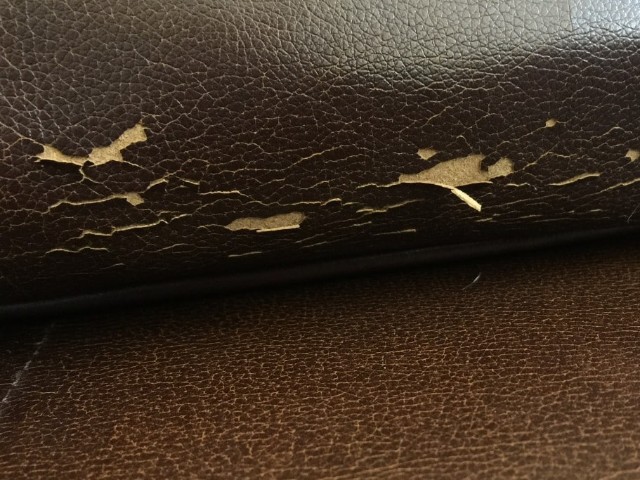
Before you begin the repair, inspect the sofa and remove any faux leather. If you cannot remove the faux leather from the seat cushion or the seams, you can use a damp microfiber cloth to wipe the sofa.
You should be careful not to remove any additional pieces from the sofa. This can cause more peeling. To avoid making a mess around your sofa, it’s a good idea to keep a trash bag and trash can nearby.
Step 2. Apply The Paint
Gently stir the leather paint into the jar. Leather paint is usually available at your local hardware or art shop. You might also consider visiting nearby furniture shops.
Use a small paintbrush to apply the paint. Dip it in the jar. Apply the paint to the areas of the sofa that are peeling. You should start by repairing the seating first.
Begin on the left side of the sofa and work your way up to the right. Apply a little paint to each area. Make sure you thoroughly paint the sofa. Pay particular attention to the seams. You may be able to find a leather paint that color matches the sofa, but you might also consider purchasing two paints to mix them to get closer to the original leather.
Step 3. Let The Paint Dry
Allow the paint to dry between 30 and 40 minutes. To avoid excessive smearing, add layers to your sofa. To check if the paint has dried, use your finger to test it. Allow it to dry for another 10 to 20 min if it feels sticky.
Step 4. Apply A Leather Finish
Once the leather paint is dry, you can apply a high gloss paint finish. You can find leather finishes in hardware and furniture shops for a reasonable price.
Before applying the finish, make sure you clean your paintbrush. Allow the finish to dry for 20-30 minutes. You need to apply the finish in horizontal strokes to avoid brush lines.
Step 5. Apply Additional Coats Of Finish
You can apply additional coats of finishing as necessary (no more than 2-3). This will help leather fabric resist further peeling.
Apply the finish liberally to the fabric, but be sure to rub it well so that it doesn’t dry on the surface.
The finish should begin to fade into the fabric after it dries. The leather finish should be removed, and the repair areas should look the same as the original.
Method 2. Use Leather Filler
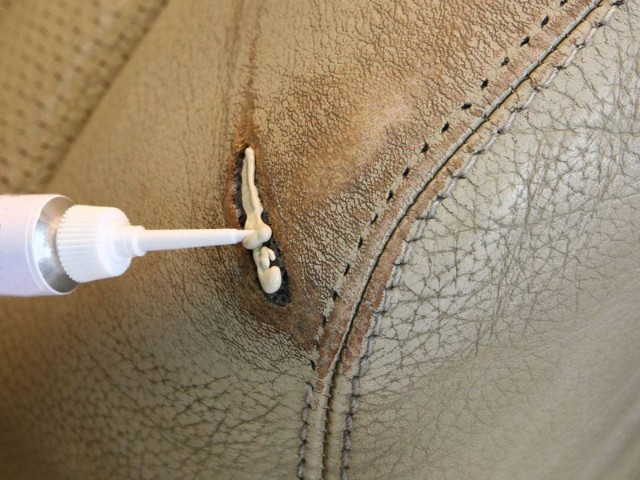
Leather filler is a similar repair compound to faux leather. This method is different from painting over a damaged couch. Instead of just filling in the gaps, you are repairing the material.
For repairs to faux leather and real leather, the leather filler is available.
You can also find it as part of a leather repair kit of different sizes and types. Make sure to choose the right color for your furniture.
Step 1. Remove Peeling Leather
To remove any leather from the sofa, use a pair of the razor blade. To accomplish this task, you can use a damp cloth to wipe the sofa. You should not remove any leather that is still intact.
Also, your fingers must be kept clean, so you don’t use them to cut away the skin. Only remove leather that is flaking or already loose.
Step 2. Apply A Leather Filler
Apply the filler to your sofa with a putty knife. You should only use small amounts of filler, not more than one tablespoon.
Begin by covering the sofa’s back, sides, and sides with the filler. Make sure not to apply the filler on any areas that are still intact. In case you apply too much filler accidentally, keep a dry cloth nearby. You will need to rub it off with the cloth before it cures quickly.
You will need to fill in the areas around the back and seat cushions. You can also use an index card, or a business card, to remove filler from the sofa’s seams.
Smoothen the filler by running it across the sofa’s surface with the putty knives. To achieve a professional finish, smoothen the edges using the tip of the putty knife.
Step 3. Let The Filler Cure
It will take 20-30 minutes for the filler to set up. You should avoid touching up on the sofa during this time as it can cause uneven and blotchy results. It is also essential to make sure that pets or children do not use the sofa during this time.
Step 4. Apply Additional Coats Of Filler
Ask for a second coat with the same technique after the first coat has dried. Be careful not to apply the filler onto the faux leather sofa’s intact areas.
Step 5. Create Texture On The Sofa (If Applicable)
You can also add texture to your faux leather sofa by using plastic wrap. This step should be completed before the leather filler has dried completely.
Take a 10- to 12-inch piece of the wrap and wrap it around your hand. Next, place your hand on the sofa and cover one section at a stretch.
Check out our list of the best leather sofas: http://nousdecor.com/best-leather-sofa
What Makes Your Top Layer Of Leather Sofa Peeling?
The peeling areas that you see in your leather sofa may be the top layer that’s drying. Therefore, you have to be aware of keeping your leather sofa working with the ideal products to help keep it moisturized. What’s more, using different materials on the leather couch can be harmful because some are powerful enough to wash the leather and make it crack and peel.
Can you discover damages like cat scratches on the leather sofa? We’ve composed a valuable article for this kind of issue. Even if real leather is more lasting, the top layer is prone to peeling and damages such as scrapes. So make sure always to understand how to tackle them without unintentionally penalizing them.
How can you prevent a leather couch from cracking?
You can learn a few tricks to prevent the leather from cracking. These are some tips to keep in mind:
Humidity levels: Avoid high humidity areas. Leather components are damaged by excessive heat and sunlight. They should be kept cool.
Exposed to excessive moisture: Leather can crack or peel if it is subjected to too much moisture.
Use only leather-friendly cleaners for cleaning: You should first try any cleaner on leather clothing you don’t want to wear. You can use the cleaning agent on your leather couch if there are no adverse effects.
Bleach: Never use bleach, no matter how large the stain. It will cause the leather to become weaker. Bleach can also dry the leather, which will reduce its longevity.
Use abrasive cloths: Leather couches should not be cleaned with abrasive cloths. The surface will be cracked if it is scrubbed with sponges or other rough materials.
Mild cleaning: After you have cleaned the leather with a leather-friendly chemical cleaner, clean the surface with soapy water and a detergent solution. Use a soft cloth to wipe it clean and dry it.
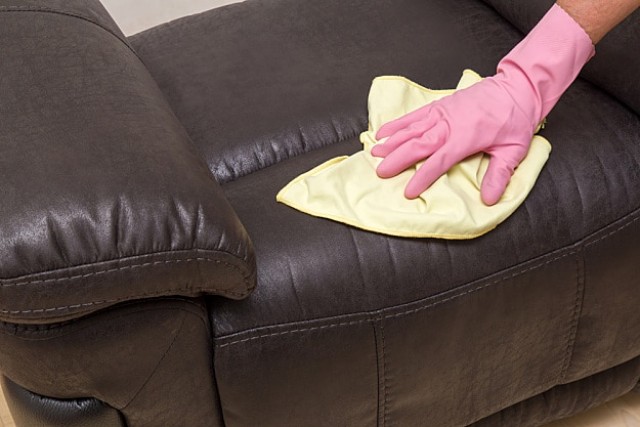
FAQs
How long can a leather couch last?
Leather couches can last between 5 and 25 years. Some even last for decades or a lifetime. You can extend the life expectancy of your leather couch by doing many things. You should only purchase top-grain leather couches. Clean it with leather-friendly products, soft cloth, and place it where there is low humidity.
Are all leather couches prone to tearing?
No. Real leather can last for many decades if it is of high-quality leather. However, not all leathers are the same. Some leathers can become brittle after a while; others may be prone to fading after only a few months. To ensure that your leather sofa lasts a lifetime, you should research the brand and construction of the couch so you can adequately care for it.
Can Bonded Leather Crack And Peel?
Bonded leather is more prone to peeling and growing cracks since it’s essentially scrapping of real leather floor and glued together. However, you might come across this reconstituted leather seeming like genuine leather since producers frequently emboss it to mimic the feel of leather. It’s also coated with polyurethane to complete the appearance.
But most bonded leather substances in the industry typically only use 20 percent of real leather. Thus, a bonded leather couch will not be as lasting as a real leather couch. Moreover, you may easily place bonded leather out of genuine leather since it seems and feels consistent compared to the latter, which has imperfections.
Can You Fix Peeling Bonded Leather?
It all depends on the quality and extent of peeling. While some products are not repairable, some bonded leather furniture can be repaired with fillers or vinyl adhesives.
How to Repair Bonded Leather Sofa Peeling?
You ought to find vinyl and leather repair kits that are acceptable for your peeling bonded leather couch. With these leather repair kits, you’re fundamentally dying the damaged area and then sealing it to prevent additional peeling. It is possible to check this manual on fixing faux leather sofa for more thoughts about the best treatments for artificial substances.
Read also: https://www.thebackstore.com/blog/8-types-leather-furniture/
Why are consumers misled about faux leather?
The term leather, as used in the United States and Canada, is not regulated. This is contrary to New Zealand, where it is illegal to mislead customers. Many furniture dealers and RV dealers don’t realize they are selling a poor synthetic.
It can prevail because of its low price point and ignorance. Ironically, the United States military spends billions of dollars each year protecting petroleum interests.
At the same time, oil reserves worldwide are being used to make shoddy furniture that will degrade before our troops can enjoy it. Congress, this is your chance to pass a decent law!
Is it worth reupholstering a leather couch that is peeling?
It can be more expensive to reupholster a leather couch that is peeling than to replace it entirely. This decision will depend on the severity of the damage. Do not accept upholstery unless it is possible to repair the damage with leather balm or leather fillers.
Conclusion
We hope you’ve got helpful information from our post on how to repair peeling leather couch. Proper maintenance and routine cleansing of leather can keep it from peeling.
If you’re concerned about taking a risk, you may always call for specialists. However, it’ll cost you if you do it on yourself. Since once your leather couch begins to peel, then you can not stop it entirely. Thus, it’s wise not to invest too much cash on something which won’t endure for long.
On the flip side, when you’ve not seen your leather couch is peeling for quite a while, it will probably be in a poor position. In cases like this, you should probably call a specialist for assistance.
Video:


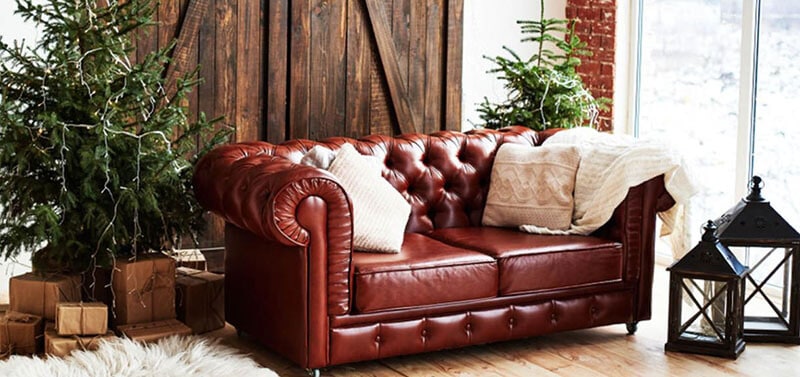

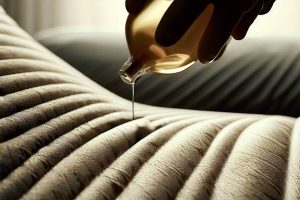

![Murphy Bed vs Sofa Bed: What’s the Difference? [2024]](https://nousdecor.com/wp-content/uploads/2021/06/Murphy-Bed-vs-Sofa-Bed-300x210.jpg)
![Settee vs Sofa: Which is the Better Choice? [2024]](https://nousdecor.com/wp-content/uploads/2021/06/Settee-vs-Sofa-1-300x225.jpg)
